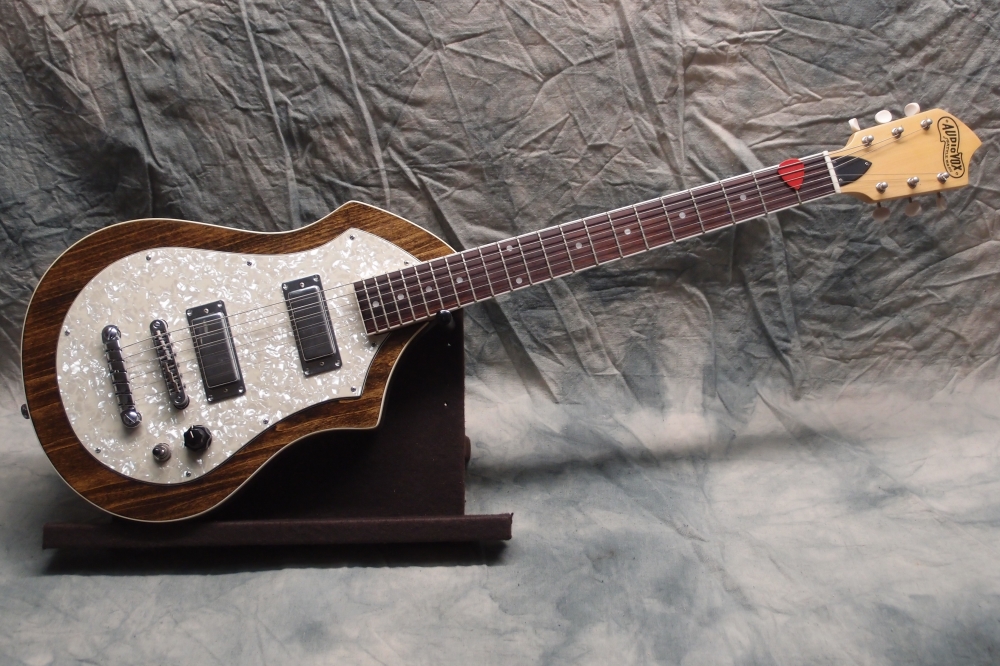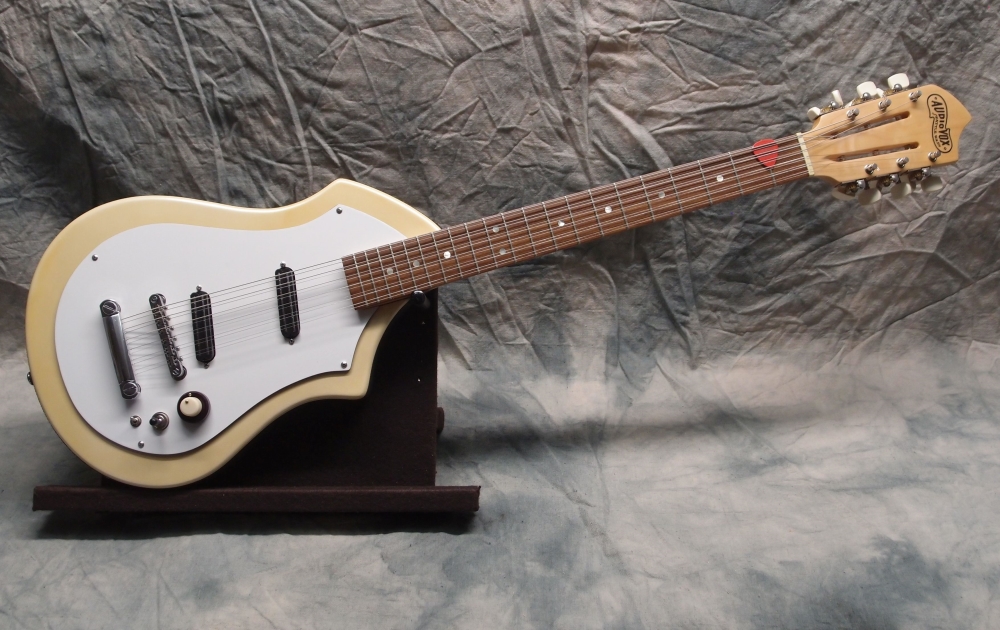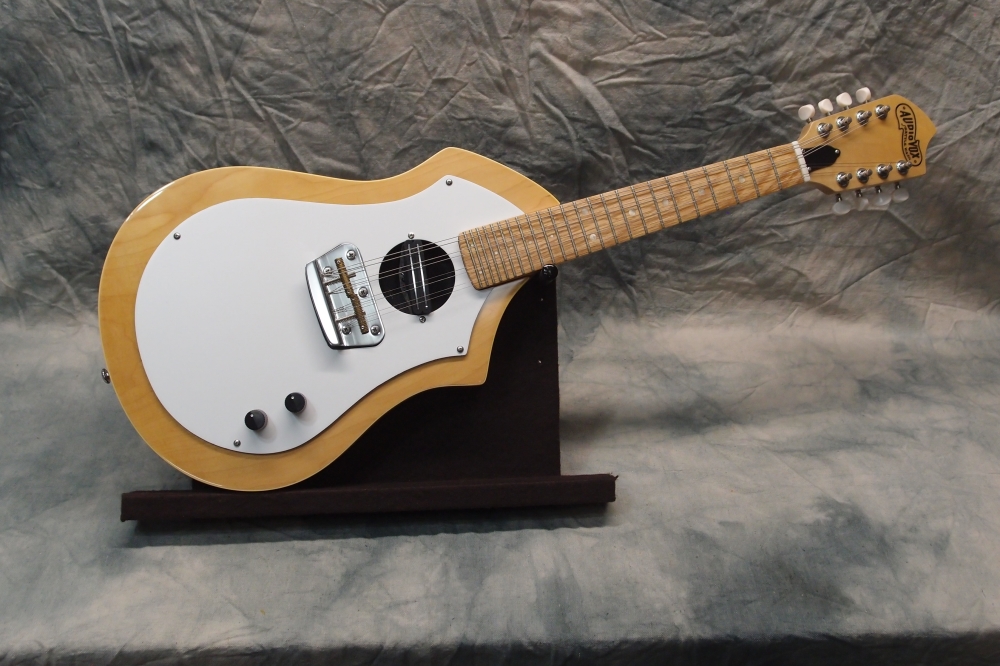Audiovox 736 Bass (2/4)
Mar 15, 2014
The Start

- 1-3/4" solid walnut ( laminated from two 7/8" boards )
- body scaled up about 5%, with 3/8" round-overs
- Fender standard neck pocket
- first coat of clear danish oil
This is not meant to be an accurate reproduction. It is going to be thoroughly modern and playable, with a 32" 20-fret Fender-type neck with truss rod, sealed bass tuners, intonating bridge, and modern pickup and electronics.
Apr 1, 2014

The body is now all drilled & routed ( actually, Forstner bit on the drill press, just the way Tutmarc did it. Walnut shavings everywhere. ) Took a lot of coats of Dan oil to fill all the walnut pores, now just needs final finishing. Output jack will be on the side. The neck attachment is bolt-on ferrules.
The pickguard is 90% finished, still covered with masking tape, aged pearl. That is a concentric knob, this bass will have a tone control, and maybe a tiny pickup switch if it turns out to be useful. The pickup is in the historic place, but the knob is moved out of the way a bit. I have my regrets about the bridge, but I made a shim for it, and it should work out. Kind of rounded, like the original.
The pickup I have for this is a blade-style strat humbucker. Say what? A pickup is a pickup. The only problem I can foresee is that it is a bit narrow for the string spread. If the E and G are weak, I have already routed for a lipstick pickup. I'll bet the guitar pickup works though, and will sound just fine. Or at least as good as Tutmarc's horseshoe magnet contraption ( which was brilliant in its day. )
The neck is patterned on a Precision that I had handy, but 32" scale. Stewmac fretboard, cut down; masking tape has the layout for the dot markers. The 20th fret hangs over, a design I worked out that allows you to build a 32" neck that is a drop-in replacement for a 34", with no modifications to the body. Or in this case, if I wanted, I could bolt on a 34" off-the-shelf neck. The tuners will be compact sealed Gotohs, and each will have a nearly straight string pull. I leave it to you to figure out how that is going to work.
I think that's about it. Next report will be when finished.















